Number #1
Supplier of Underground Mine Cordless Cap Lamps
The Digital Mine
Tracking, Device/Data Management, Digital Kiosk, Digital Tagboard, CAS, Long Range High Rate WiFi Access Point
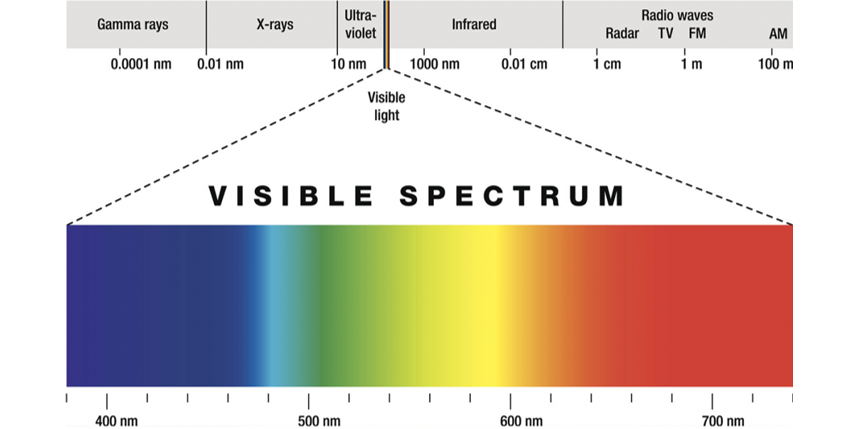
How The Human Eye Perceives Lights
The light and colours that we see are actually just radio signals in different frequencies and wavelengths. The human eye can see wavelengths of 380-750 nm, which represent different colours. For example, closer to 400 nm we see blue, while closer to 700 nm we see red.
All colours can be created based on a mixture of red, green and blue (RGB), including white. However, our eyes have different sensitivity levels to different colours. In fact, we can graph the human eye’s sensitivity level to different colours as a bell curve. In the graph below, the wavelengths between 380-750 nm are different colours, while the Spectral Luminous Efficiency is the sensitivity of the human eye to the colours. For example, our eyes have the highest sensitivity level to the colour green from millions of years of evolution living in rainforests, but the least sensitivity level to black, because we are not nocturnal creatures.
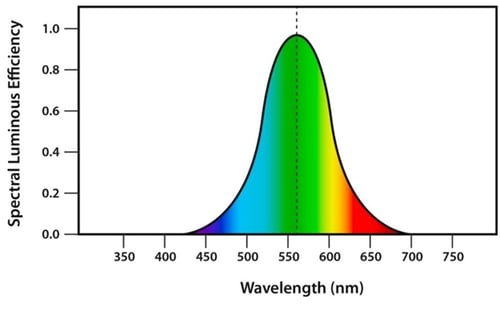
Figure 2: Human eye sensitivity to different colours
Light Measurements
Light is measured in four ways:
1. Luminous flux, F(lm): Measuring light in all directions.
2. Luminous intensity, I(cd): Measuring light in one direction.
3. Illumination, E(lx): Measuring light received.
4. Power, P(w): Electrical power consumption.
Luminous Flux: Measuring Light in all Directions
Light can be emitted in all directions; for instance, a light bulb. To measure the total energy generated by a light source, the light emitted in all directions must be accumulated. We use luminous flux as the measurement of light emitting in all directions.
Luminous flux: Measurement of the amount of energy emitted per second in all directions.
Symbol: F
Unit: Lumen (lm)
Examples: A low-power LED generates 4 lm, while a cap lamp generates 120 lm
The instrument used to measure luminous flux is an Integrating Sphere. The light source is placed inside the Integrating Sphere, then light energy emitted in all directions is measured.
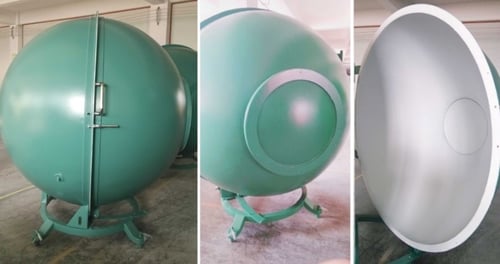
Figure 3: Integrating Sphere
Luminous Intensity: Measuring Light in a Single Direction
Light is rarely required to be emitted in all directions. Take streetlights for example, any light energy emitted towards the sky is wasted energy. In most applications, light emission is required in one direction only. We use luminous intensity as the measurement of light emitting in one direction.
Luminous intensity: The luminous flux emitted by a light source in a given direction within the unit of the solid angle.
Symbol: I
Unit: Candela (cd)
Angle is a 2D concept. Solid angle is similar, but in 3D. Its symbol is Ω and the unit is called steradian (sr).

Figure 4: Solid angle
The formula for luminous intensity is:

Focused Light
A light generating energy from a single point is called a point light source. Light intensities from a point light source vary in different directions; i.e. the centre line of the light is the strongest, but the light gets weaker as it moves towards the sides.
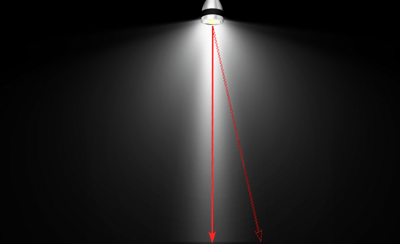
Figure 5: Light with varying intensity
Often lighting devices project light in a narrow solid angle to form a focused light. Typical focused lights are torches and cap lamps. Normally, the luminous intensity in focused direction, or peak direction, is critical, so it is listed in the light specification table. Candela is used as the unit of measurement for focused lights.
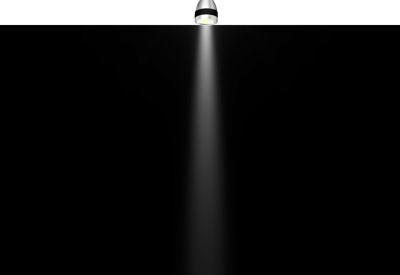
Figure 6: Focused light
Examples: A low-power LED gives 70 cd, while a cap lamp gives 5,000 cd.
Illumination: Measuring Light Received
To see an object in darkness, a light source is required to project light onto the object. The more light energy projected on the object, the clearer it becomes. We use illumination as the measurement of light projected onto objects or surfaces.
Illumination: The luminous flux falling on the area of an object or surface.
Symbol: E
Unit: lux (lx)
If the symbol of area is A, then the formula is:

Luminous flux (F) and luminous intensity (I) are measurements of light produced by a source. Conversely, illumination (E) is measurement of the light received by an object or surface, called the light receiver.
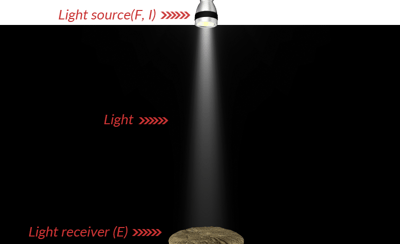
Figure 7: Measuring light source vs. measuring light receiver
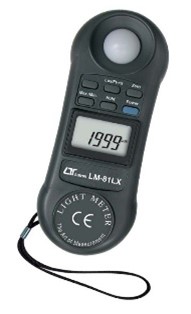
Figure 8: Lux meter
Common Illumination Quantities
Below are some common illumination quantities:
| Illuminance (lx) | Examples |
| 0.00001 | Light from Sirius, the brightest star in the night sky |
| 0.0001 | Total Starlight, overcast sky |
| 0.002 | Moonless clear night sky with airglow |
| 0.01 | Quarter moon |
| 0.27 | Full moon on a clear night |
| 1 | Full moon overhead at tropical latitudes |
| 3.4 | Dark limit of civil twilight under a clear sky |
| 50 | Family living room |
| 80 | Hallway/toilet |
| 100 | Very dark overcast day |
| 320-500 | Office lighting |
| 400 | Sunrise or sunset on a clear day |
| 1,000 | Overcast day; typical TV studio lighting |
| 10,000 - 25,000 | Full daylight (not direct sun) |
| 32,000 - 130,000 | Direct sunlight |
We can comfortably read a book at home under room lighting where the illumination on the book is 50 lx. We can also read the same book outside under indirect sunlight where the illumination is 20,000 lx. Do we see 400 times the difference in lighting? Certaintly not. From millions of years of human evolution, our eyes have learned to adapt to different environmental lighting. Our pupils can change size to control the amount of light coming into our eyes. Our nerves are very sensitive to low light, but less sensitive to bright light. We need to take this adaptive behaviour into consideration when choosing between lighting devices. For example, if you use two cap lamps separately, one with 8,000 lx and one with 10,000 lx, you will not notice a 25% increase in lighting unless you do a direct comparison of the two cap lamps. The lux value of both cap lamps are more than sufficient for our needs, to the point where our pupils would actually need to shrink, so our eyes do not become overwhelmed by the excessive lighting. You are much better off using other criterias to choose between the two cap lamps. In fact, extreme illuminations could have adverse effects. When our pupils shrink to reduce the amount of light received, they do not only reduce the light from the cap lamp; they reduce all light in the surrounding. For instance, the light bouncing off warning signs outside the focus of the cap lamp light will be reduced, making them harder to see. Pedestrians outside a vehicle headlights’ field of view will be darkened, making them even more difficult to spot for the driver.
Relationship Between Light Distance and Area
The area which a focused light illuminates becomes bigger when the distance between the light and receiver is becomes longer. For example, when holding a torch up, but facing down, the higher the torch is from the floor, the larger the circle of light projected onto the floor. Conversely, the lower the torch is from the floor, the smaller the circle of light.
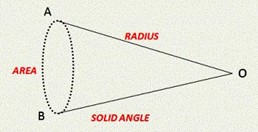
Figure 9: Light distance and light area
However, the further the light source is from the light receiver, the lower the illumination, because the light is spread out onto a larger area. The relationship between illumination and distance between light source and light receiver obeys reverse square law:

The radius is the same as the distance, because a light source spreads light in all directions in a spherical shape. So the distance between the centre of the sphere of light to the object or surface on the edge, is actually the radius. Even for focused lights, the narrow line of light is essentially a narrow cone of the sphere.

Figure 10: Radius / Distance
If we know the illumination for any distance, we can deduce the illuminations for other distances. This makes light measurement easier.
For example, if the illumination of a cap lamp at a distance of 1 m is 5,000 lx, then the illumination at 3 m can be calculated as: 5,000 lx ÷ 32 = 556 lx.
Therefore, whenever lux numbers are discussed, the distance must also be specified. However, often lux numbers are discussed without mentioning the distance. This is because the distance is implicit. It could be an industrial standard for a specific light application or a popular and frequently used distance in daily life.
Choosing Industrial Standards for Distances
There are two common methods of selecting industrial standards:
Method 1: Using the distance most commonly used in real life applications. For example, office lights are usually 2 m above the floor, while streetlights in many countries have a regulatory standard of being 4 m above the ground.
Method 2: Using a distance which is easily measured. For example, cap lamp illumination is measured at 1 m distance, even though miners rarely use cap lamps to see objects at this distance. Nonetheless, cap lamp illumination specifications do not mention this distance; it is implicit
The 1 Metre Phenomenon
Another important factor is the illumination (E) vs. illuminous intensity (I) relationship at 1 m distance. Let’s start from the solid angle definition in steradian:
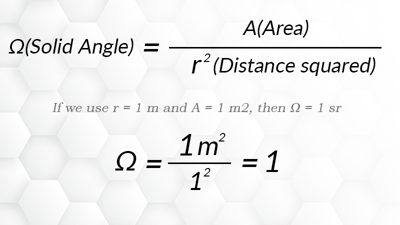
If we use 1 m distance for our illumination (E) and luminous intensity (I) formula, we get:

Therefore, illumination (E) and luminous intensity (I) have the same value.
As we can see, at 1 m distance, the illumination (lx), the light falling on the object or surface, is the same as the illuminous intensity (cd), the light projected by the light source in a given direction. This gives us a convenient way to measure luminous intensity. Simply place the lux meter at 1m in this direction and the lux value from the lux meter will also be the cd number.
This concept is widely used. Take cap lamps for example. Cap lamp standards worldwide use both lx and cd. Some users use the lx number while others use the cd number. Either way, the units in lx and cd are the same, because the distance used in the calculations is 1 m.
Power: Electrical Power Consumption
Professionals in the field of light and optics discuss illumination in terms of luminous flux (F), luminous intensity (I) or illumination (E). However, non-professionals often discuss in terms of electrical power. We use power as the measurement of the electrical power consumed by a light source.
Power: Electrical power consumed by a light source.
Symbol: P
Unit: watt (w)
The amount of light output from a light source is fundamentally decided by the electrical power it uses. Therefore, non-professionals often believe a 25W light is more powerful than a 20W light. However, light output is also related to many other factors, including light source efficiency, driver circuit efficiency, temperature and optical design. Hence, professionals normally do not use power; instead they use luminous flux (F), luminous intensity (I) or illumination (E).
Non-professionals also tend to use adjectives, such as bright, dark, dim, strong or weak to describe a light. This can be confusing and misleading, as they could referring to either F, I or E. However, after reading this blog, you can now more accurately interpret which measurements non-professionals are referring to.
Summary
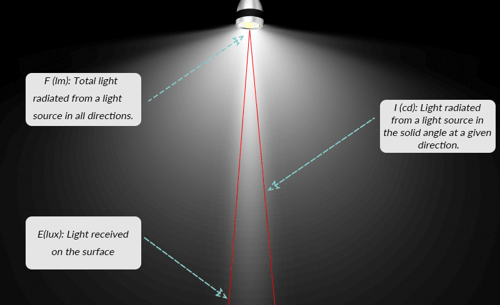
Luminous flux (F) is measured in lumens (lm).
Luminous intensity (I) is measured in candela (cd). The formula is:

Illumination (E) is measured in lux (lx). The formula is:


